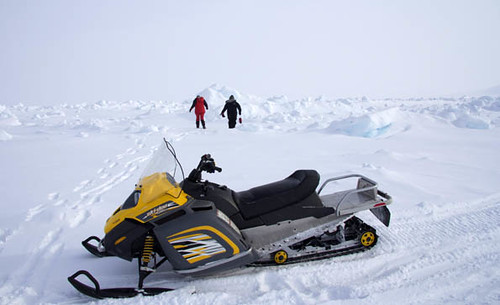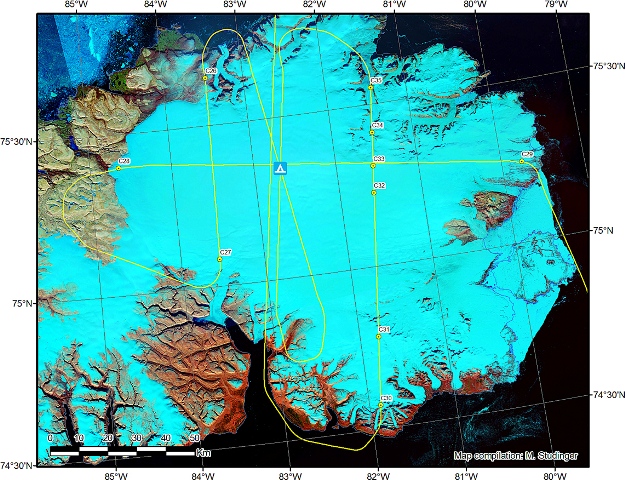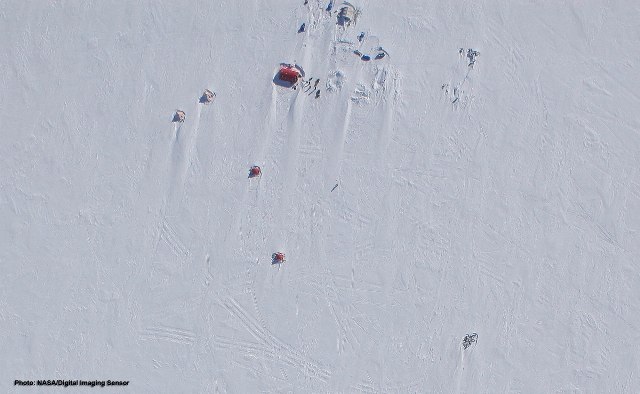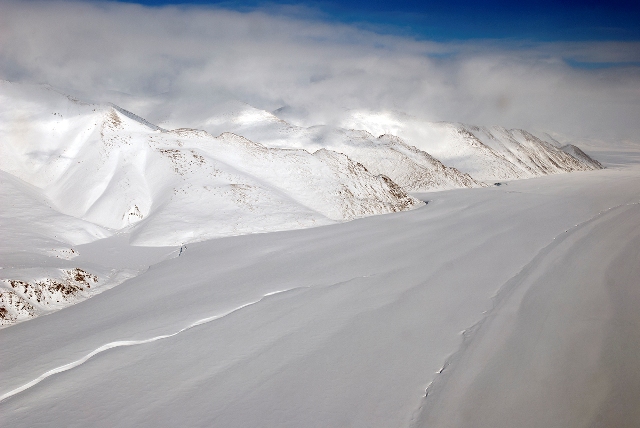From Michael (NASA), Greenland, 5 May
The storm conditions at Thule Air Base were downgraded from Charlie to Bravo and we were able to take off at 10:52 LT in fairly poor visibility on the runway. Shortly after takeoff, the conditions deteriorated again to Charlie and the airfield was closed for a short time, while we were airborne.
Only the targets on the east side of Greenland showed good weather today, but these areas require a 7.5-hour flight to be surveyed efficiently. We had only a 5-hour window to work with and decided to fly the Devon Ice Cap mission despite some clouds in the area. We had to drop the Barnes Ice Cap from the mission plan because of time restriction, but were able to add the 20 April CryoSat orbit to the mission and two glacier runs over Bylot Island.
We encountered more clouds over the Devon Ice Cap than expected from the forecast and had to change flight elevation occasionally. We were able to survey the critical parts at 1,500 ft AGL and got good data.
A phone call with the CryoSat campaign field party shortly before takeoff confirmed good conditions at least over the Summit Camp on the Devon Ice Cap. We flew over the camp and the corner reflectors several times. Conditions changed quickly. On the last flight we could barely see the camp.
The goals of the CryoSat experiment on Devon Island are to assess the accuracy of surface elevations derived from CryoSat-2 L2 data; to assess the potential for CryoSat-2 data to be used for mapping snow accumulation over ice caps across the Queen Elizabeth Islands and to relate CryoSat-2 waveforms to surface and near-surface conditions on the ice cap. In order to do this it is necessary to continue measurements along the original CryoSat cal/val transect (ASIRAS Line 623) to maintain long-term thickness changes measurements that began in 2004.
The ATM lasers got 75% surface returns over the Devon Ice Cap and 90% over the two glaciers on Bylot Island. The snow, Ku-band and accumulation radars lost some data due to altitude changes necessary due to a loss of forward visibility.
With today’s flight, IceBridge has completed all three missions of the joint experiment with ESA’s CryoVEx teams.
Mark your calendars for the upcoming Fall AGU in San Francisco. We all have some landmark data sets to show!
Adapted from Michael Studinger’s NASA IceBridge Flight Report for 5 May





Discussion: no comments